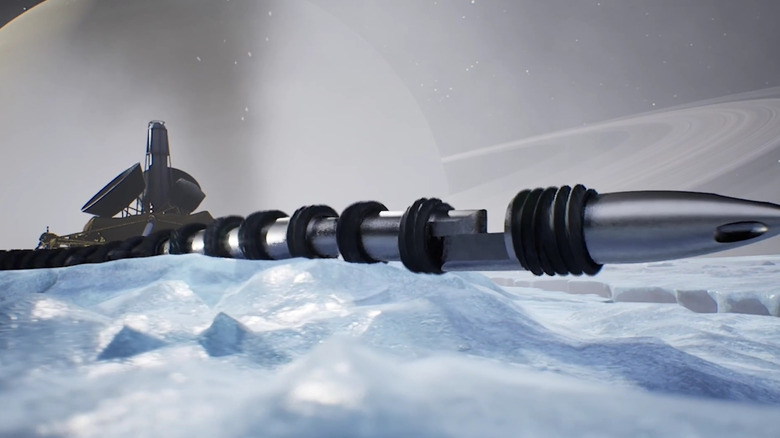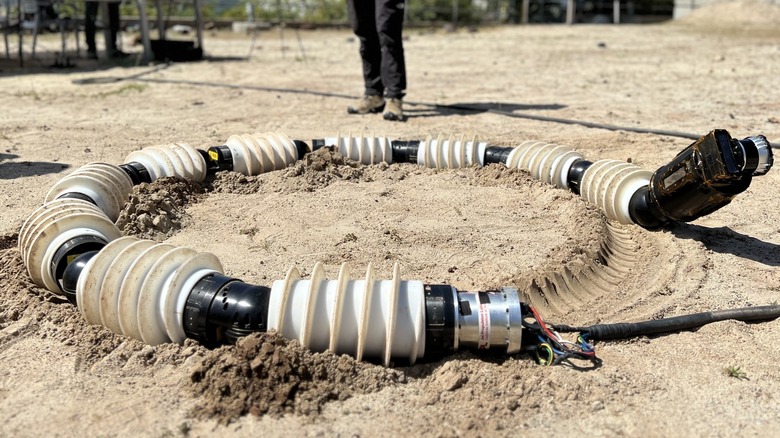How NASA's New Slithering, Swimming Robot Could Explore Places We've Never Seen
It's been joked that Mars is a planet entirely inhabited by robots. While this is true (unless we find biological evidence to the contrary or show up ourselves), it hardly makes Mars unique. Humans have been to the moon and hope to return again soon, but for now it's also a sphere occupied by robots. Likewise, humans have never touched the surface of Mercury, Venus, or Saturn' moon Titan, but our scientific devices have. We've sent stationary landers, rolling rovers, and even helicopters. And now, NASA wants to send a slithering snake-bot into the depths of space.
A team at NASA's Jet Propulsion Laboratory (JPL) has been working since 2019 on a snake-esque robot to explore a variety of terrains found not only here on Earth, but also on other worlds of interest within our solar system. The robot's name is Exobiology Extant Life Surveyor, or EELS — a name that conveys its function as well as its form.
In its current form, EELS weighs roughly 220 pounds and is 13 feet long, made from 10 identical screw-like segments that can independently rotate, articulate, and sense their environment. Wrapped in threads made of aluminum or 3D-printed material, EELS can propel itself using a variety of unusual motions and configurations, and an advanced sensing system allows it analyze risk and adapt to its environment in real-time without human intervention. So where do scientists want to send EELS?
A robot designed for versatility
EELS is being tested in diverse settings including sand, snow, ice, and underwater. Luckily there are plenty of use cases here on Earth for such a robot. But EELS is aiming elsewhere. It's ideally suited for Enceladus, an icy moon of Saturn. Scientists discovered active geysers there in 2005 and sampled their plumes, which revealed organic material and likely a planet-wide ocean beneath the ice. This moon would be an excellent place to search for life beyond Earth, but it's not the only one.
Oceans are also believed to be beneath the surface of three of Jupiter's moons: Europa, Ganymede, and Callisto. A recent study also suggested subsurface oceans on four of Uranus' moons: Ariel, Umbriel, Titania, and Oberon. Another of Saturn's moons — Titan — is the only planetary body outside of Earth known to have liquid oceans on its surface. Neptune's moon Triton is known to have geysers, and plumes have been theorized on the dwarf planet Pluto too. EELS is also well-equipped to explore underground lava tubes such as those found on the moon, Mars, and potentially Mercury.
With so many destinations of interest that are well-suited to EELS' unique style of exploration, it's possible that this modular robot could be built at scale for future exploration. This could theoretically save development costs. It's one small slither for robot but a big leap for robot-kind.

